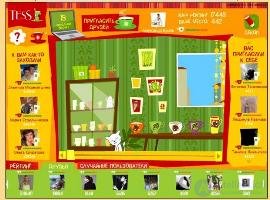The concept of " Social Web " ( Social Web ) is used to describe how the socialization of users and their interaction with each other through the WWW . The basis for the association of users are a variety of common interests.
The term " Social Web " can be used to express two concepts.
- The first concept is related to the description of Web 2.0 technologies, which focus primarily on social interactions and communities.
- The second concept is used to describe the network of the future, similar to the WWW.
One can consider as a community a multitude of people connected and interacting with each other through content in the mode of dialogue and joint actions through the Internet.
Being aimed at promoting interaction between people, social software for the Web operates with the following social attributes :
- identity,
- reputation,
- presence,
- connections,
- group affiliation
- communication,
- shared content.
Social software is a wide range of software systems that allow users to interact and share data. This method of computer-mediated interaction has become popular with the emergence of social sites such as MySpace, Facebook, Odnoklassniki, Flickr and YouTube media sites, and eBay commercial sites.
Many of these applications have common characteristics such as: open APIs, service-oriented design, the ability to remotely place data and media files. Such applications are commonly referred to as Web 2.0 systems.
Inside the social software can be divided into two groups of software tools: communication and interactive .
- Communication tools are used to record, store and present communication data, most often in text form, but more and more in audio and video formats.
- Interactive tools are used to support data-mediated (different media formats) interaction between individual users and their groups. Unlike communication tools, the emphasis is on supporting user connectivity and communication mechanisms between them.
- In contrast to communication tools, which are usually asynchronous, interactive tools are mostly synchronous, allowing users to interact in real time (as in the case of Internet telephony, video chats, etc.) or almost simultaneously (instant messaging services, text chat, etc.). P.).
The following are examples of software systems that are related to social software:
- Instant messaging systems ( IM - Instant messaging ) allow you to communicate with another user through a network in real time (in a relatively secure mode). The most popular of them include Skype, ICQ, Yahoo! Messenger, MSN Messenger, AOL Instant Messenger, Miranda IM. Business-oriented systems include IBM Lotus Sametime, Microsoft Messenger, and Jabber.
- Internet chat rooms ( IRC - Internet Relay Chat ) allow multiple users to communicate simultaneously in real time.
- Internet forums have come to change electronic conferences (which arose before the advent of the WWW). The forum user can create a new "topic" available to others. Other users can view the topic and leave their comments in a sequential post.
- Web blogs ( web logs ), or briefly blogs, can be viewed as personal online journals of individual users. The blog owner can post messages in his journal, while other users (readers) can leave their comments to them.
- Wiki directories ( wikis ), or simply wikis, are in essence web sites whose content can be edited by site visitors. The most famous example is Wikipedia.
- Service social networks allow users to integrate online around their common interests, hobbies or on various occasions. For example, some sites provide services through which users can share personal information necessary for finding partners for public access. Examples: LinkedIn, In contact.
- Social decision making networks - web-based discussion networks for decision making. Used to establish a permanent connection of individuals with the government.
- Commercial social networks are focused on supporting business transactions and building people's trust in brands based on their opinions about the product, how to make it better, etc., thereby allowing consumers to participate in promoting the product and expanding their awareness.
- Social bookmarking. Some websites allow users to make a list of bookmarks or popular websites available to others. Such sites can also be used to search for users with common interests. Example: del.icio.us.
- Social catalogs ( social cataloging ) are reminiscent of social bookmarking, but are focused on academic use, allowing users to work with databases of quotations from scientific articles. Examples: Academic Search Premier, LexisNexis Academic University , CiteULike, Connotea.
- Social libraries are applications that allow visitors to leave links to their collections, books, audio recordings, etc., available to others. Support is provided for a system of recommendations, ratings, etc. Examples: discogs.com, imdb.com.
- Massively Multiplayer Online Games imitate virtual worlds with different scoring systems, levels, competition, winners and losers. Example: World of Warcraft.
Folksonomy
Folksonomy ( folksonomy ) - the practice and methodology of joint categorization of content (links, photos, video clips, etc.) by means of randomly selected tags (tags). It is based on the spontaneous collaboration of a group of people with the goal of organizing content and is completely different from traditional formal classification methods based on index terms . As a rule, this phenomenon occurs only in non-hierarchical communities, for example, on publicly accessible websites. Since participants in the folksonomy of content are usually its main consumers, the use of the folxonomy methodology leads to results that more accurately reflect the joint conceptual content model of the whole group.
The main problems of folksonomy, leading to unreliability and inconsistency of results, are:
- The presence of plural forms.
- Polysemy.
- Synonymy.
- The depth (specificity) of using tags.
Folxonomy can be considered as one of the key elements in the development of the Semantic Web network , within which all web pages contain machine-oriented metadata describing the contents of the pages. These metadata should significantly improve the accuracy of search engines. However, in order to avoid the difficulties caused by the unreliability and inconsistency in the work of large communities of page authors, they are encouraged to use metadata standards, such as the Dublin Core .
Semantic Web
The Semantic Web is part of a global concept for the development of the Internet, the goal of which is to realize the possibility of computer processing of information available on the WWW. The main focus of this concept is on working with metadata that uniquely characterize the properties and content of WWW resources, instead of the textual analysis of documents currently used.
The term was coined by Tim Berners-Lee in May 2001.
Widespread use of the semantic web
- universal resource identifiers (URIs)
- ontologies and metadata description languages.
The concept of the semantic web was adopted and promoted by the W3C. For its implementation it is supposed to create a network of documents containing metadata about WWW resources, and existing in parallel with them. While the resources themselves are intended for human perception, metadata are used by machines (search robots and other intelligent agents) to obtain unambiguous information about the properties of these resources using inference engines.
The technical part of the semantic web is a family of standards for description languages, including XML , XML Schema , RDF , RDF Schema , OWL , etc. The need to describe metadata somehow leads to duplication of information. Each document should be created in two copies: marked for reading by people, as well as in a machine-oriented format.
Ontology
An ontology is an attempt to comprehensively and thoroughly formalize a certain area of knowledge using a conceptual scheme. Typically, such a scheme consists of a hierarchical data structure containing all the relevant classes of objects, their relationships and rules (theorems, constraints) adopted in this area.
Modern ontologies usually consist of instances , concepts , attributes, and relationships .
To describe the ontologies of the Web, a special language was developed - OWL (Web Ontology Language), built on the basis of XML. OWL can be used to describe classes and the relationships between them. At the core of the language is the representation of reality in the object-property data model. The language is applicable not only to the description of web pages, but also to any objects of reality and is considered as one of the fundamental technologies necessary for building the Semantic Web.
Semantic Web Services
While a set of resources and their metadata can be considered a static part of the semantic web , its dynamic part is represented by semantic web services - complete elements of program logic with uniquely described semantics, accessible via the Web and suitable for search, composition and execution.
Technically, a semantic web service differs from a regular web service by the presence of not only the interface description (usually in WSDL ) in terms of the types of data transmitted to the service, the values returned and errors generated, but also the semantic description of all its characteristics.
The potential benefit of using semantic web services is the ability to automatically search (and also composition) software agents suitable services to solve the tasks.
Nevertheless, the complexity of this task in its general formulation so far allows to achieve some positive results only in highly specialized industries that clearly benefit from the introduction of service-oriented architecture, for example, in the integration of enterprise applications.
Creating social networking apps
To date, all popular social networks, such as Facebook, Vkontakte, Odnoklassniki, offer the placement of custom applications. They interact with the data of the user who added the application to his page, namely, access to the user's basic information: a list of his friends, photos, hobbies, etc. The application is an additional part for the social network, expanding its capabilities.
Objectives for creating applications:
- Increased demand for a company product or service
- Attracting an additional audience
- Brand loyalty building
- Increased demand for the company's products or services
According to the experts of New Media Age, the longer the duration of the game / contact with the branded content, the higher the user's desire to purchase the product. Compared to standard advertising formats, a branded game allows you to increase brand awareness 3 times in the first 90 seconds of the game. ”
application type:
- score;
- business application;
- games and entertainment;
- branded game;
- virus application;
- flash game.
Currently, the most popular types of social networking applications are:
- Single and multiplayer games (simulators, arcade, board and others). The branded game allows you to establish long-term associations with the company by experiencing positive emotions.
- Applications aimed at the interests of users (movies, design, dating and others). Often, such applications are tests or quizzes. Such projects are great for hidden brand promotion. For example, the user is asked to take a test on the recognition of actors. The test results are directly or hidden related to the products of the company or its services.
- e-commerce applications: showcases, catalogs, online stores. Thanks to modern modules it is possible to transfer an exact copy of the online store to social networks.
The configuration of branded applications depends on the goals, objectives and wishes of the Client. A distinctive feature of applications in social networks is their uniqueness. Each project is carried out by individual order, in fact, being an exclusive, piece product. With the help of a wide range of tools (graphics, animation, music) in such projects you can embody a variety of ideas from a simple gaming application to a viral game. In addition, such applications have a high degree of user involvement, as well as a variety of mechanisms to attract additional audiences (share the application with friends to earn extra points, totems, etc.). At the time of involvement in the application, the user experiences positive emotions, thereby establishing associations with the brand. In addition, the ability to integrate actions from reality into the gameplay (for example, totem purchase) allows you to motivate users to take specific actions.
For the Client, such projects become valuable due to obtaining complete information about the user who installed the application or game on his page, as well as his friends.
Recently, online stores in social networks have become widespread. Now the buyer does not need to go to the company's website, he can make purchases simply and conveniently without registering and entering personal data, they all are already in his profile.
The most popular platform for creating an online store in social networks is 1 `C Bitrix. If an online store on the site is created on this platform, then it remains only to transfer an exact copy of the online store to social networks using specialized modules.
Examples of applications and online stores in social networks




Social Networking SDK for the main mobile platforms: iOS, Android and Windows Phone - reduces the integration time of the network API and provides additional benefits:
- Authorization with the help of official clients . The user will be able to pass authorization in the application through the client's network without entering the login and password.
- Record Publishing Interface . The user can use a special interface to quickly create and publish a post on his page.
- Publishing games . Game creators will be able to publish their game on the mobile gaming platform of the social network.
According to the type of integration (implementation) of the application of social networks are
Standalone-application (In fact - an application that does not need any dependencies and works by itself.)
Web site
IFrame / Flash application




Comments
To leave a comment
Fundamentals of Internet and Web Technologies
Terms: Fundamentals of Internet and Web Technologies